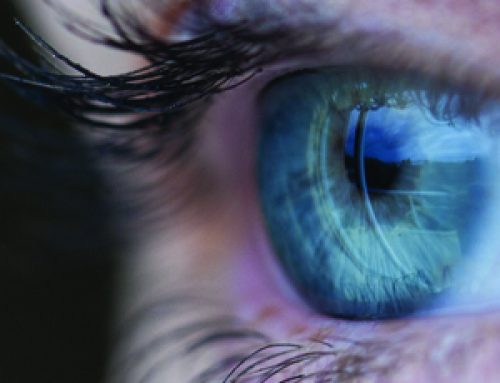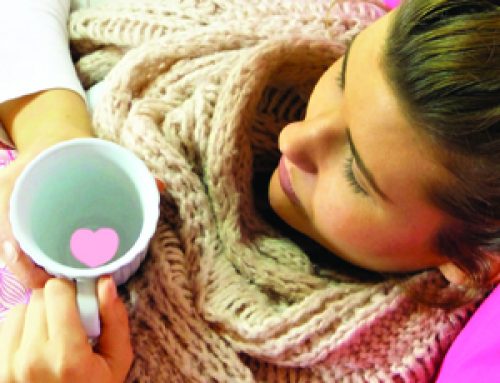Endometriosis Q&A
An Interview with Mary Lou Ballweg of the Endometriosis Association
 March has been designated Endometriosis Awareness Month, so it seemed fitting to interview Mary Lou Ballweg, founder and Executive Director of the Endometriosis Association. Here are the questions we posed to her:
March has been designated Endometriosis Awareness Month, so it seemed fitting to interview Mary Lou Ballweg, founder and Executive Director of the Endometriosis Association. Here are the questions we posed to her:
WIP: How did the Endometriosis Association begin?
MLB: The Endometriosis Association was founded in 1980 after I was bedridden for quite a long time. While ill, I promised myself and the universe that I would do something once I got back on my feet—I couldn’t be the only woman in the world with endometriosis. In fact, the conservative estimate of the number of women and girls with endometriosis now (2013) is 89 million.
WIP: It seems like there has been a lot of progress in the last ten years. Specifically, dioxin exposure has been identified as a cause.
MLB: Much progress has emanated from the Association’s discovery 20 years ago that dioxin was able to cause endometriosis. In fact, that discovery involved the Harlow Primate Laboratories in Madison, WI.
WIP: How can you detoxify from dioxin?
MLB: Detoxification is a very complex subject. We usually encourage women to work with healthcare practitioners who have experience in detoxifying as, typically, our women with endometriosis and related diseases are exquisitely sensitive to these toxins—releasing them from their stores in fat and elsewhere can make a person very sick if not done carefully and correctly. Avoiding these toxins is very critical—we covered this topic extensively in our last two books, The Endometriosis Sourcebook and Endometriosis: The Complete Reference for Taking Charge of Your Health.
WIP: Is there more endometriosis in some geographic areas than others?
MBL: Yes, we have noted that there seems to be much more endometriosis in some areas of the country compared to others (the Great Lakes area, San Francisco Bay area, the entire northeast US, Brazil, Japan, China) but clusters are impossible to prove at this time since the majority of those with endometriosis are not diagnosed for a range of reasons.
WIP: Do you feel that young women should do a laparoscopy to get a diagnosis or is there something recommended that is less invasive?
MLB: Unfortunately, at this point, endometriosis it is not considered to be conclusively diagnosed unless a laparoscopy is done. Research is underway to find blood, urine, or saliva diagnostic tests. Because endometriosis is also an immune system disease, laparoscopy can only show lesions, which are probably sequelae, the end result of the disease process. If we as women would take our health more seriously, long before it got to that point, perhaps we could avoid years of pain and suffering that all too often go undiagnosed.
WIP: It appears that women with endometriosis can actually be allergic to their own hormones. What hormones are involved? What is the procedure for reversing the allergy problems? Is this type of treatment easy to access?
MLB: Environmental medicine physicians have shown that individuals can indeed be allergic to their own hormones. Women with endometriosis are often allergic to progesterone and/or luteinizing hormone. Utilizing allergy desensitization techniques can be very helpful. The practitioners with the most experience are environmental medicine physicians who have special training.
WIP: What is the role played by an overgrowth of Candida? Do women with endometriosis need to address this?
MLB: The issue of Candida albicans is more complex than meets the eye. We have followed the issue of microbiota imbalance (the beneficial—and some harmful—microorganisms that occupy our bodies, particularly in the intestines) since the early 1980s when we discovered that many of our board members and leaders greatly improved their health by working to improve the balance of the microbiota in their bodies. Details on addressing this important problem are covered in the “Immunotherapy” chapter in Endometriosis: The Complete Reference for Taking Charge of Your Health.
WIP: Many drug treatments center on using synthetic progestins. How often do women and their practitioners choose to use progesterone instead, and what problems might they face? Can they reverse the endometriosis with progesterone?
MLB: Synthetic progestins are frequently used to treat endometriosis because they are promoted by pharmaceutical companies. It is important to note that progestin is not the same as natural progesterone and has somewhat different effects. Many women on synthetic progestin report significant side effects. If they are allergic to progesterone (as allergy tests can show), they often will not tolerate natural progesterone either unless they are first desensitized. There is no single treatment that reverses endometriosis—this complex disease requires a whole range of approaches.
WIP: Are there other hormone abnormalities?
MLB: Yes, hormone abnormalities, as well as numerous immune abnormalities, are part of endometriosis. Seven autoimmune diseases have been solidly linked to endometriosis, as well as a number of cancers. This information, including important preventative ideas, is covered in-depth in our latest book, Endometriosis: The Complete Reference for Taking Charge of Your Health.
WIP: Many of our clients seek help with hormones because they have experienced surgical menopause. We always recommend a balanced and bioidentical hormone approach. Do you have any words of caution for us on the type of advice we might give these women?
MLB: I think the most important caution for any woman facing surgical menopause because of endometriosis is to sort through her particular situation carefully, hopefully with a knowledgeable and experienced healthcare practitioner. We cover surgical menopause in our latest book but, unfortunately, there is very limited information based on science and clinical research on this topic. It seems that after hysterectomy and removal of the ovaries, gynecologists tend to think the disease is done, although recent research shows that that is not always the case. We do caution women about phytoestrogens as some have had a recurrence of their endometriosis with use of soy and other products that are estrogenic. Plastics used in food and beverage packaging and elsewhere are also a surprisingly potent source of estrogenic substances.
WIP: Diet and supplementation seem to make a big difference. Would you comment on this?
MLB: A whole range of approaches can make a huge difference in the health of women with endometriosis, along with other healthy approaches, including balancing hormones that are often out of balance in endometriosis, desensitizing to allergies, maintaining a healthy environment that minimizes allergens and toxins, and (very importantly) focusing on healthy nutrition.
We have covered nutrition extensively in our books, beginning with our very first book back in the 1980s. There are some special precautions women with endometriosis need to take. The topic is too large to cover in a short article but material is available from the Association.
WIP: The most heartbreaking part of your book is the years of suffering some women go through before they get a diagnosis they can work with. Young women seem to have very few resources for understanding what is going on with their bodies. They typically would not be the ones reading our newsletters, so how can we help get this message out to their mothers, aunts and grandmothers?
MLB: I would encourage every woman to be supportive of other women, particularly young women and girls who may be experiencing symptoms of endometriosis, and not understand what is happening and/or not have the resources and support to get diagnosed. Incapacitating pain during menstrual periods (I would actually say any pain) is not normal. Menstruation is an ongoing normal bodily function and as such should not be painful—we would not say, for instance, that painful bowel movements or urination is normal. It is the taboo and stigma around menstruation that has allowed so many to suffer. Please, mothers, grandmothers, aunts, every woman, help the young women and girls around you.
WIP: Are there any other comments you would like to add?
MLB: One of our members named endometriosis “the disease that keeps on giving.” That is an apt description. We strongly encourage women and girls to take charge of their health so that they can live life to the fullest. Reading up on the disease, talking to others with it, being a member of the Association—all of these will help women and girls avoid the “easy” fix that is all too often offered by surgeons and others, and rather help them develop real health that can sustain them, in spite of endometriosis and related health problems.




